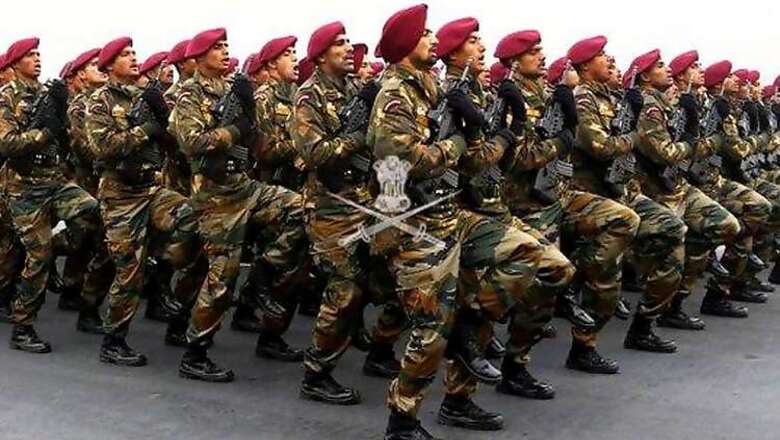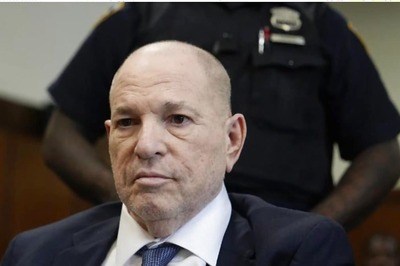
views
While the hot pursuit of Northeast terror groups deep inside Myanmar, which many serving and retired defence personnel have been advocating for the last several years, came as the biggest sign of India’s new-found assertiveness under the Narendra Modi government, there have been many signals in the last few months that India won’t sit back if its authority was challenged.
The June 9 commando operation involving 40 soldiers of Indian Army’s 21 Para Special Forces clearly shows there would be pre-emptive action to neutralise terror threats and forces will go all out once the green signal was given from the top political leadership.
Also read: Myanmar home to many anti-India terror groups from the Northeast
The most surprising aspect of the strike was the timing which came just five days after the June 4 ambush in Manipur’s Chandel district. With a government at the Centre which prides itself in projecting India as a regional power, the go-ahead for targeting the terrorists hiding inside Myanmar and enjoying the support of Chinese security establishment came quickly.
Once Centre backed the operation which involved sending out commandos deep inside Myanmar territory, the Army prepared its strategy to target the ultras in their den. Drones and operatives sent inside Myanmar were used by the Army to pinpoint the location of the terrorists and their camps. Once the location was confirmed, commandos were briefed and the green signal given.
Army’s 21 Para Special Forces was tasked with carrying out the strike and Indian Air Force helicopters were used to drop them near the Indo-Myanmar border from where they crossed over to the other side. The actual strike was carried out between 1 AM and 4 AM on Tuesday and almost 40 terrorists, many of them involved in the ambush on 6 Dogra, were killed and several others injured. The two camps were also fully destroyed.
Also Read: India carries out surgical strikes at two terror camps inside Myanmar
Naga insurgent outfit Nationalist Socialist Council of Nagaland-Khaplang (NSCN-K) along with Manipuri outfit Kangleipak Communist Party (KCP) and Kanglei Yawol Kanna Lup (KYKL) had claimed responsibility for the attack on the convoy.
Just a few months back massive retaliatory firing by the Army and Border Security Force at the Line of Control had forced the Pakistani forces on to the defensive. In fact so overwhelming was the firepower employed by the Indian side that Pakistani Army moved to forward posts manned by Pakistan Rangers along the International Border in Jammu and Kashmir.
The Modi government has given blanket permission to the Army and BSF to target any and every Pakistani post that fires at the Indian side. With political backing no longer an issue, India has taught a lesson to the Pakistani side which had gotten used to lukewarm retaliation from across the border in the last few years.
In fact the Indian security establishment at the IB and Line of Control in Jammu and Kashmir has been told not to conduct any flag meeting with Pakistan until there is complete ceasefire from the other side. Even Pakistan’s attempt to draw international attention to the Kashmir issue by firing along the IB failed as the Indian government has managed its foreign relations with the big world powers very deftly.
India’s relations with Bangladesh are already on an upswing. The government of Bangladeshi Prime Minister Sheikh Hasina has already taken a strong line on anti-India forces and ensured that their activities are under control much to the cheer of New Delhi.
India has also sent out a strong message to China by speeding up infrastructure projects along the Line of Actual control. India is already building an 1800-km highway along the contentious 4,057 km-long border to counter China. The infrastructure project is the single biggest in Indian history with a budget of over Rs 40,000 crore.
Alongwith infrastructure upgrade, the Indian Army is also modernising and increasing its operational capability along the China border both in Arunachal Pradesh and Ladakh in Jammu and Kashmir.first published:June 10, 2015, 20:34 ISTlast updated:June 10, 2015, 21:38 IST
window._taboola = window._taboola || [];_taboola.push({mode: 'thumbnails-mid-article',container: 'taboola-mid-article-thumbnails',placement: 'Mid Article Thumbnails',target_type: 'mix'});
let eventFire = false;
window.addEventListener('scroll', () => {
if (window.taboolaInt && !eventFire) {
setTimeout(() => {
ga('send', 'event', 'Mid Article Thumbnails', 'PV');
ga('set', 'dimension22', "Taboola Yes");
}, 4000);
eventFire = true;
}
});
window._taboola = window._taboola || [];_taboola.push({mode: 'thumbnails-a', container: 'taboola-below-article-thumbnails', placement: 'Below Article Thumbnails', target_type: 'mix' });Latest News
One covert operation and India has sent out the strongest possible message to terror groups and adversaries that they are no longer safe even if they are hiding deep inside enemy territory. Once terror groups active in the Northeast ambushed and killed 18 soldiers of 6 Dogra Regiment in Manipur, dealing the force the bloodiest blow in over three decades in a single incident, it was just a matter of time before the 1.13 million strong Indian Army retaliated.
While the hot pursuit of Northeast terror groups deep inside Myanmar, which many serving and retired defence personnel have been advocating for the last several years, came as the biggest sign of India’s new-found assertiveness under the Narendra Modi government, there have been many signals in the last few months that India won’t sit back if its authority was challenged.
The June 9 commando operation involving 40 soldiers of Indian Army’s 21 Para Special Forces clearly shows there would be pre-emptive action to neutralise terror threats and forces will go all out once the green signal was given from the top political leadership.
Also read: Myanmar home to many anti-India terror groups from the Northeast
The most surprising aspect of the strike was the timing which came just five days after the June 4 ambush in Manipur’s Chandel district. With a government at the Centre which prides itself in projecting India as a regional power, the go-ahead for targeting the terrorists hiding inside Myanmar and enjoying the support of Chinese security establishment came quickly.
Once Centre backed the operation which involved sending out commandos deep inside Myanmar territory, the Army prepared its strategy to target the ultras in their den. Drones and operatives sent inside Myanmar were used by the Army to pinpoint the location of the terrorists and their camps. Once the location was confirmed, commandos were briefed and the green signal given.
Army’s 21 Para Special Forces was tasked with carrying out the strike and Indian Air Force helicopters were used to drop them near the Indo-Myanmar border from where they crossed over to the other side. The actual strike was carried out between 1 AM and 4 AM on Tuesday and almost 40 terrorists, many of them involved in the ambush on 6 Dogra, were killed and several others injured. The two camps were also fully destroyed.
Also Read: India carries out surgical strikes at two terror camps inside Myanmar
Naga insurgent outfit Nationalist Socialist Council of Nagaland-Khaplang (NSCN-K) along with Manipuri outfit Kangleipak Communist Party (KCP) and Kanglei Yawol Kanna Lup (KYKL) had claimed responsibility for the attack on the convoy.
Just a few months back massive retaliatory firing by the Army and Border Security Force at the Line of Control had forced the Pakistani forces on to the defensive. In fact so overwhelming was the firepower employed by the Indian side that Pakistani Army moved to forward posts manned by Pakistan Rangers along the International Border in Jammu and Kashmir.
The Modi government has given blanket permission to the Army and BSF to target any and every Pakistani post that fires at the Indian side. With political backing no longer an issue, India has taught a lesson to the Pakistani side which had gotten used to lukewarm retaliation from across the border in the last few years.
In fact the Indian security establishment at the IB and Line of Control in Jammu and Kashmir has been told not to conduct any flag meeting with Pakistan until there is complete ceasefire from the other side. Even Pakistan’s attempt to draw international attention to the Kashmir issue by firing along the IB failed as the Indian government has managed its foreign relations with the big world powers very deftly.
India’s relations with Bangladesh are already on an upswing. The government of Bangladeshi Prime Minister Sheikh Hasina has already taken a strong line on anti-India forces and ensured that their activities are under control much to the cheer of New Delhi.
India has also sent out a strong message to China by speeding up infrastructure projects along the Line of Actual control. India is already building an 1800-km highway along the contentious 4,057 km-long border to counter China. The infrastructure project is the single biggest in Indian history with a budget of over Rs 40,000 crore.
Alongwith infrastructure upgrade, the Indian Army is also modernising and increasing its operational capability along the China border both in Arunachal Pradesh and Ladakh in Jammu and Kashmir.




















Comments
0 comment